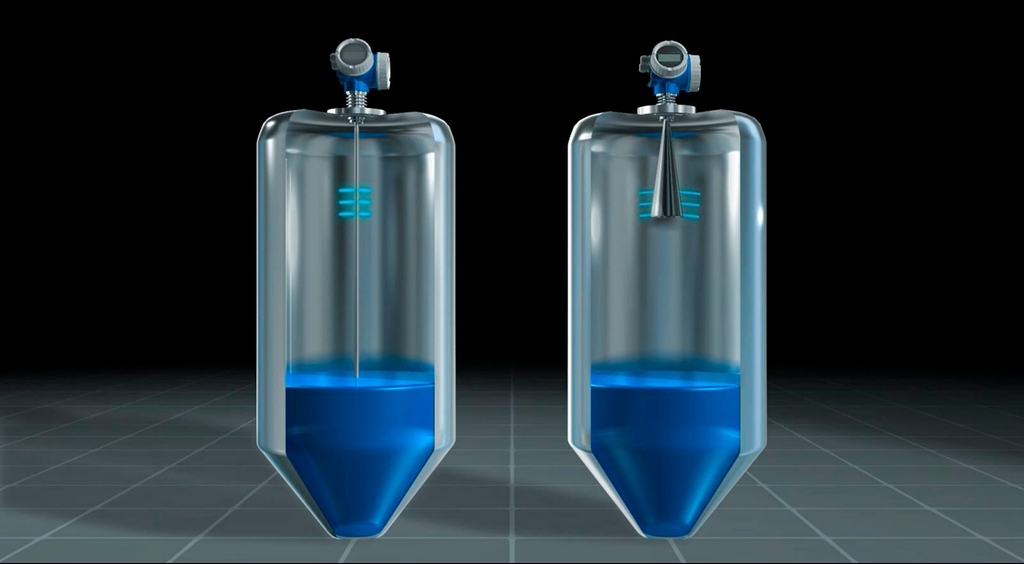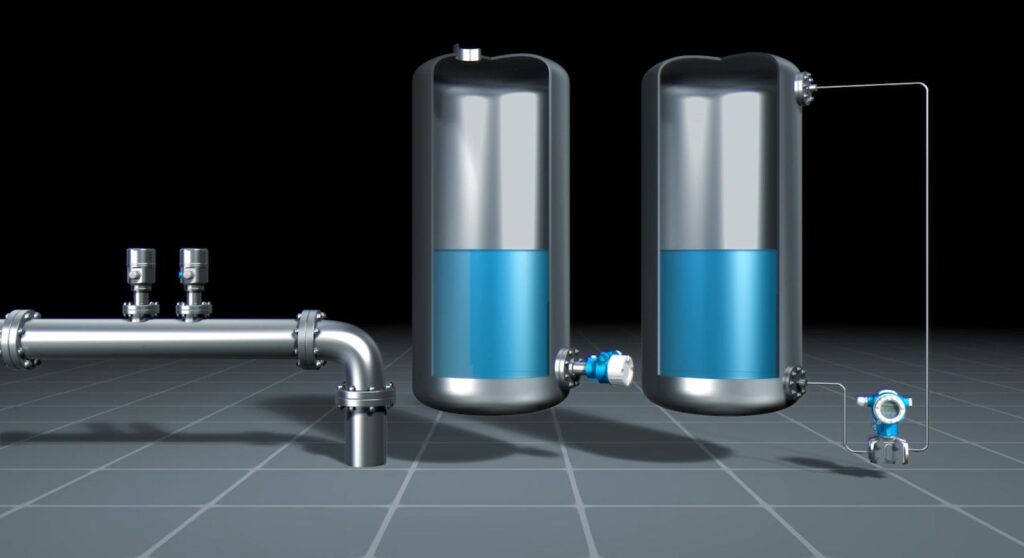Preventive maintenance through wireless protocols and cloud connections
Companies globally are adopting digitalization to improve their operations and empower their workforces. One notable advancement in the process industries […]
How have the free space radar and the hydrostatic level sensor evolved and how are they used today in the food and beverage industry?
Hydrostatic level sensors are used in 90% of all continuous level measurements. However, things are changing due to the need for higher accuracy for plant mass balance and other inventory-related applications. Since the free space radar provides a much higher measurement accuracy, the industry is migrating toward it.
Of the two, the free space radar has evolved further and more rapidly than the hydrostatic level sensor. The benefit of the free space radar is that it is less affected by temperature fluctuations often seen in food and beverage applications due to clean-in-place, pasteurization and other thermal processes. Free space radar is also unaffected by density changes as it looks at the surface of the media versus hydrostatic which measures the pressure of the liquid column (P=density x height of liquid column).
Another recent development is the move to the 80 gigahertz radar which results in a tighter beam angle that permits placement of the radar closer to a tank wall. This allows users to aim more specifically toward the level, avoiding other obstructions that might be inside of a tank. Also, you can accommodate diverse ways of installing the radar flush or in nozzles so they can be cleaned, which is essential for the food industry to ensure the cleanliness of tanks in your process.
While the free space radar has progressed further than the hydrostatic level sensor, these level sensors have also evolved significantly. We have seen better stability on the sensors and better temperature compensation, which is critical in food and beverage, where you often see drastic temperature changes due to transferring cold products to warm and then back to cold. This should be taken into consideration when selecting measurement instruments. All pressure sensors can measure levels, but not all are optimized to handle temperature fluctuations which can result in significant zero-point and measurement errors.
What are the differences between free space radars and hydrostatic level sensors?
The technology is entirely different. One is based on level measurements where you measure the weight of a hydrostatic column above the level sensor. And that is how you gauge what the level is. On the other hand, a free space radar is mounted from the top, looking down at the surface and uses time-of-flight (ToF) technology to measure the level. The end measurement might be slightly different, but users sometimes try to minimize or avoid process connections at the bottom of a tank to reduce the risk of leaks or contamination.


What are the advantages of using free space radars and hydrostatic level sensors for plant mass balance?
There are advantages to both technologies. The free space radar and hydrostatic level sensor are exceptionally reliable for plant mass balance. As for the benefits of the free space radar, it is mounted on the top of a tank, so it is generally less exposed to external washdown and accidental damage. Much replacement of hydrostatic sensors is due to mishandling during installation or calibration where the pressure-sensitive membrane is damaged. This risk is completely eliminated with radar.
The hydrostatic level sensor’s advantages for measurement have been known for years. A hydrostatic level sensor is excellent for general level measurement in balance tanks, buffer tanks and cook kettles. While I consider the free space radar the more reliable measurement technology, there are reasons to consider both. If you have questions, contact one of our experts for support.
How are these sensors applied for inventory purposes?
When looking at inventory, you generally look for the highest accuracy possible. On the other hand, knowing exactly how much you have in inventory is critical. Both principles provide high levels of accuracy. The hydrostatic accuracy is based on the percentage of your measured range. Typically, 0.1% is achievable, but realistically, in an installation, you are looking at 0.1% to 1% accuracy based on the height of the measured range. With a radar unit, you can achieve 1/24″ to 1/12″ (one to two millimeters), independent of the tank height.
In what instances should I choose one of these tools over the other?
Let’s start with the type of tank and the type of measurement. If you’re looking for high accuracy for inventory management, I would look at the free space radar as a first choice. Storage or buffer tanks where high performance is required, such as final product tanks before filling machines, benefit from high accuracy. This is of value when balancing product volume with packaging material or filling machine scheduling to ensure packaging matches with the available product as close as possible.
For a smaller balance tank, a process tank or a surge tank, where accuracy is not super critical, the hydrostatic level sensor is the choice to consider first. Also, hydrostatic would be recommended if you get into applications with heavy foam, agitation or turbulence. With the smaller, fast-moving surge tanks where accuracy is not critical, hydrostatic is usually the best option.
How do I know if I am optimally using my free space radar or hydrostatic level sensor technology?
It starts with determining your desired performance, what you need out of it and the application parameters. Then, what are the challenges you need to overcome related to installations, cleaning, maintenance, connectivity, etc. And at the end of the day, if it works appropriately, you know you’re getting the most out of it. So that would be optimal technology.
Companies globally are adopting digitalization to improve their operations and empower their workforces. One notable advancement in the process industries […]
Instruments are vital in process environments because their measurements directly impact product quality and operational safety. However, even the most […]
Greg Pryor is the Temperature Product Marketing Manager at Endress+Hauser USA. To help answer some questions surrounding temperature transmitters, we […]